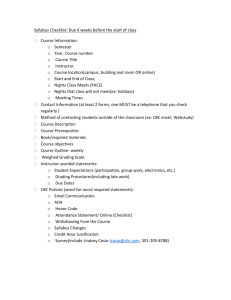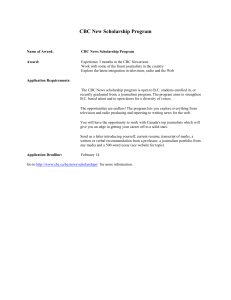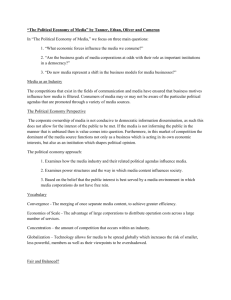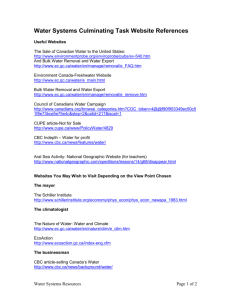Physical and Emotional Well
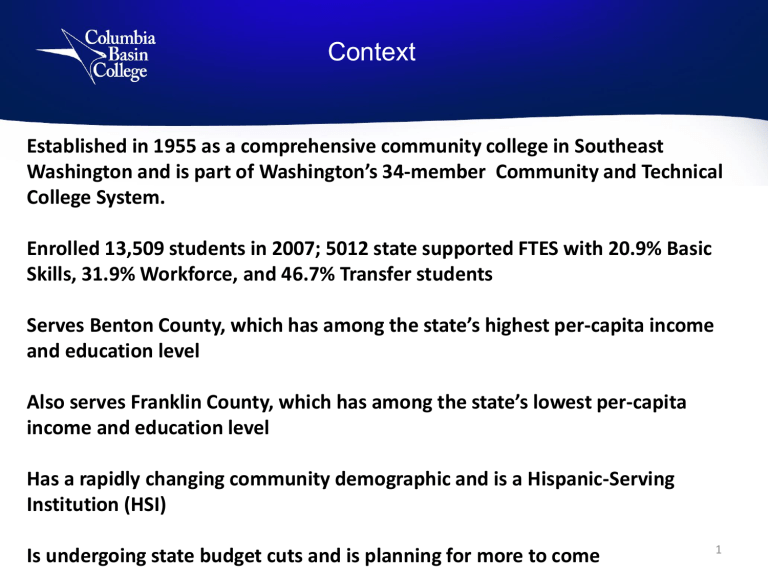
Context
Established in 1955 as a comprehensive community college in Southeast
Washington and is part of Washington’s 34-member Community and Technical
College System.
Enrolled 13,509 students in 2007; 5012 state supported FTES with 20.9% Basic
Skills, 31.9% Workforce, and 46.7% Transfer students
Serves Benton County, which has among the state’s highest per-capita income and education level
Also serves Franklin County, which has among the state’s lowest per-capita income and education level
Has a rapidly changing community demographic and is a Hispanic-Serving
Institution (HSI)
Is undergoing state budget cuts and is planning for more to come 1
Columbia Basin College
Mission Statement
CBC exists in an environment of diversity, fairness, equity, and sustainability to ensure that the people of Benton and Franklin counties have access to educational programs providing sufficient knowledge for higher educational achievement, meaningful employment, basic skills development, cultural enrichment, physical and emotional well-being.
2
Governance at CBC: the Carver Model
Main features of the Carver Model:
• Ends determination is the pivotal duty of governance
•The Board determines the “Ends”– which customer results are to be achieved, for whom, and at what cost
•The Board of Trustees represents the ownership of the organization and governs on behalf of these owners
• Board decisions are primarily policy ones
• Executive limitations: the Board sets boundaries of acceptability within which methods and activities can be left up to staff
• The Board grants the CEO authority to make all decisions as long as they are within the Board’s Ends and limitations policies
•The Board defines and delegates, rather than reacting and ratifying
3
CBC End States (Themes)
In addition to a mission statement, CBC, following the Carver Model of Board Governance, has also developed a series of End States, which are derived directly from the College Mission.
Access
CBC exists to provide people of the service district with access to educational programs.
Academic
CBC exists to enable students to complete requirements that would allow them to obtain academic degrees, transfer to upper division colleges and universities, and pursue life-long learning and enrichment.
Workforce Development
CBC exists to enable students to complete requirements that would allow them to earn degrees/certificates to assist them to gain employment and pursue life-long learning opportunities.
4
CBC End States
(continued)
Basic Skills
CBC exists to enable students to prepare for success in college level skills courses.
Cultural Enrichment
CBC will provide the college and the community with diverse and multiculturally rich programs designed to improve our quality of life, life-long learning opportunities and enhance educational programs.
Physical and Emotional Well-Being
CBC will contribute to the physical and emotional well-being of its students and the community.
5
Indicators for the Access End State
Objectives
A. will achieve high rates of new and ongoing enrollment from the community
B. Students will display high rates of retention, progress and completion
C. The college will provide effective student support services
Indicators
A1. trends
A2. Enrollment vs allocation
Performance:
Strong
Strong
A3. Enrollment from high schools Moderate/low
A4. Running Start enrollment Strong
B1. Fall to fall retention
B2. 3-yr completion rates
B3. Substantial Progress
B4. SAI points achieved
C1. Amount of financial aid
C2. # students with disabilities receiving services
C3. Student perceptions of counseling, student services
C4. Perceptions of ed. barriers
Strong
Moderate
Strong
Moderate
Low
Moderate
Moderate
Very positive (few barriers)
Moderate
D. Minority students will display rates of enrollment, retention and completion similar to those of Whites
D1.% Hispanics
D2. % Hispanics in Transfer,
Workforce
D3. Hispanic graduation rates
D4. Hispanic enrollment by
High school
Moderate
Very low
Moderate/low
Use of
Results:
Indicators for the Academic End State
Academic End State Objectives and Measures
Objectives Indicators
A. Students accomplish SLOs 1. % SLOs with rubrics
2. Domain coverage of SLOs
3. Critical Thinking performance
4. Survey results for students
5. Survey results for faculty
100%
B
I
B+
B+
Results Use of results
Implement data collection plan
T &LC actions
T &LC actions
B. Students demonstrate learning 1. Success/withdrawal rates (Descriptive data) Create Withdrawal Task Force
2. Hispanic Gateway performance (Descriptive data)
3. Content knowledge data CAPP testing planned
C. Students succeed at
4-yr institutions
D. Highly qualified faculty
E. Student satisfaction
1. % Transfer students who transfer
2. Performance at WSU Tri-Cities
3. Performance at CWU
4. Graduation rates from 4-yr
1. Full-time/part time faculty ratio B
2. Faculty salaries
3. Faculty diversity
A
A
1. Student satisfaction ratings
2. Distance Learning Enrollment
3. Distance learning completions
4. Distance Learning survey
B
A
A
A
A
B+
B
Research collaboration w/WSU
Enrollment Mgt. Committee
Ongoing recruiting activities
WSU TC Collaboration Task Force
Expand courses, train faculty
Conduct research on learning
